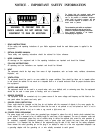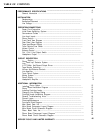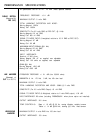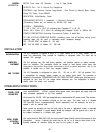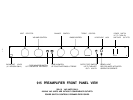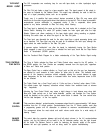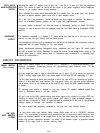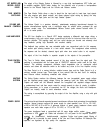
TAPE INPUT/
The 915 incorporates one monitoring loop for use with tape decks, or other input/output signal
RECORD OUTPUT
processors.
TONE CONTROLS/
TONE SWITCH
VOLUME
CONTROL
BALANCE
CONTROL
The
Ret
Out jack feeds a signal to a tape recorder’s input. The signal present at this output is
the same as indicated by the Selector Switch. This output may alternately be used to feed the
input of a signal processing device, such as an equalizer.
Though rare, it is possible that some external devices connected to
Rec
Out may cause slight
distortion to the main signal path when that device is turned off. This is due to possible
semiconductor junction rectification in unpowered circuits. If this is suspected, leave power
applied to any device connected to
Rec
Out during critical listening.
The Tape Input is electrically the same as the other line level inputs, but is selected via the Tape
Monitor Switch. Activating this switch (UP position) breaks the main signal path after the Input
Selector System and allows monitoring of the tape decks output, during recording or playback.
Activating this switch does not affect the signal at the
Rec
Out jacks.
The Tape Input may alternately be used for the return signal from a signal processing device, such
as an equalizer. The Tape Input may also be used for an additional line level input, although this
signal cannot be made available to the
Rec
Out jacks.
A common system “malfunction” can often be traced to inadvertently leaving the Tape Monitor
Switch engaged: in case of no sound from a selected line level input, check that the Tape Monitor
Switch is de-activated (DOWN position).
See the Functional Block Diagram for a better understanding of the Tape Monitor Signal routing.
The Tone In Switch activates the Bass and Treble Controls when moved to the UP position.
In
the DOWN position, the Tone Controls are completely removed from the signal path, regardless
of Bass and Treble knob position.
The Bass Control has a variable inflection, or “hinge” point so that only the very low frequencies
are affected by small amounts of knob rotation on either side of center. This facilitates small
amounts of low frequency corrections without noticeably altering the musical balance at upper
bass frequencies. As the knob rotation is increased further from center, frequencies closer to 500
Hz are affected.
The Treble Control has a fixed “hinge” point at 1
kHz
and has a “shelving” action above 5
kHz.
This affords proper high frequency corrections without irritation from excessive boost at extreme
high frequencies.
Activating the Tone Control Switch may cause a slight change in tonal balance even when both
Bass and Treble controls are in their center
detented position, and therefore the Tone System
should be disabled via the switch when no tone control action is desired. The tone controls also
limit the total
bandpass of the line amplifier.
This precision
detented
potentiometer increases output level in approximately 1
dB
steps
clockwise from the 12 o’clock position. Counterclockwise from the 12 o’clock position, each step
is progressively greater until full attenuation is achieved at maximum counterclockwise position.
This arrangement allows the most natural and useful volume control action for a wide variety of
listening levels.
This control alters the proportion between right and left output volumes. In the full counterclockwise
position, only the left channel will be heard. In the full clockwise position, only the right channel
will be heard. The Balance Control is useful for balancing the acoustic output of the system
between left and right speakers, as well as being useful for system troubleshooting.
-9-



